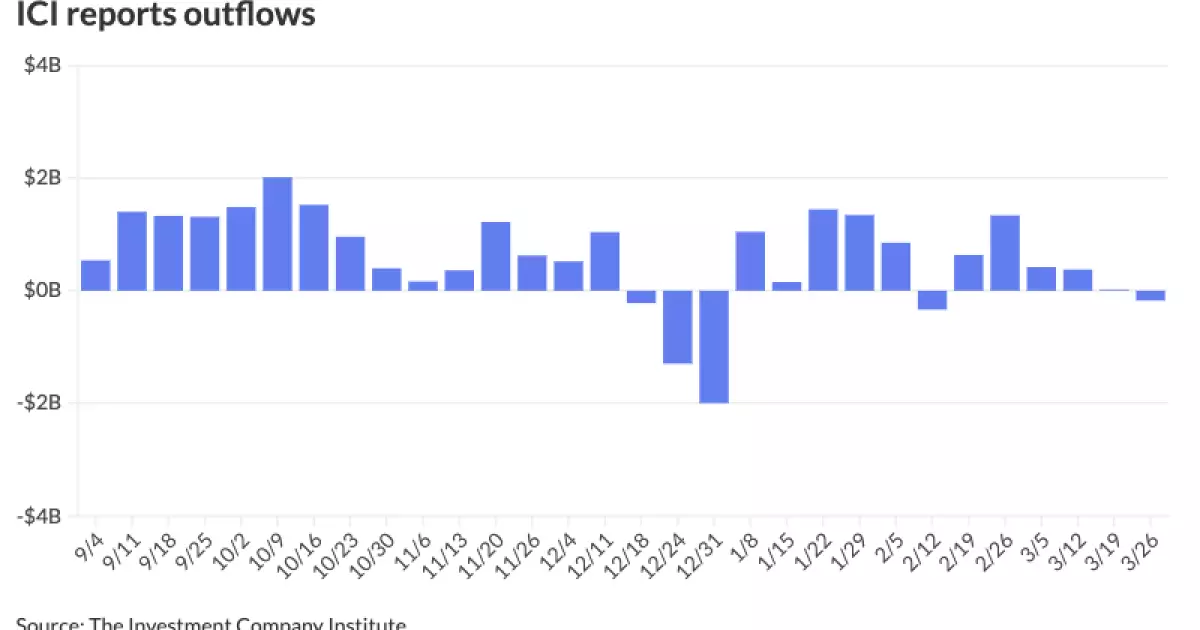The aftermath of President Trump’s recent tariffs speech has upended both bond markets and investor sentiment, introducing an atmosphere thick with uncertainty. The network of U.S. Treasuries saw fluctuations that mirrored the volatile geopolitical landscape. Initially, yields displayed a slight upward trend, indicating a temporary sense of stability, only to retreat and paint a dire picture by the market’s close. A significant theme emerged post-speech: fears surrounding tariffs are overshadowing sound economic fundamentals, reflecting a palpable anxiety among business leaders.
As Trump’s discourse loomed, market actors were preoccupied with speculation on what tariffs would ensue, affecting U.S. imports to a significant degree. Experts at J.P. Morgan weighed in, suggesting that while they expect retaliatory tariffs—a strategy to level the playing field against unfair trade practice—a significant amount of uncertainty looms over their execution. What started as an approach to leverage trade negotiations has devolved into chaos that impacts business operations on a broader scale.
The Role of Fear in Market Dynamics
James Pruskowski, Chief Investment Officer at 16Rock Asset Management, paints a grim portrait of current market sentiment: “fear, not fundamentals, is driving markets.” In his analysis, the fundamental underpinnings of the global economy may appear stable on the surface, yet deeper analysis reveals a shaky foundation. Such a climate leads to a crisis of confidence, where decision-makers are increasingly paralyzed by the unpredictable influence of tariffs, tax reforms, and immigration policies all rolled into one daunting financial scenario.
The juxtaposition of solid economic indicators with declining corporate sentiments is alarming. Major corporations, such as FedEx, signaling caution through profit warnings—have sparked red flags for many corporations planning for the future. The prevailing environment is one where financial solidity crumbles under the weight of shifting policy narratives, raising critical questions about overall market resilience.
Municipal Bonds Amid Fiscal Risks
In the world of municipal bonds, while yields held steady, signs of emerging stress are difficult to ignore. The latest figures indicate strong ratios, yet Pruskowski notes that the fiscal and policy risks tied to healthcare and higher education sectors are beginning to pile up. This narrative is contrastingly rich: while the municipal bond market isn’t crumbling as of now, the prospects are becoming increasingly strained.
Notably, recent outflows from municipal funds—amounting to $175 million—have not gone unnoticed. These numbers spell doom for local governments keen on financing through bonds, mirroring a loss of investor confidence in sectors increasingly beset by uncertainty. In a landscape already polarized by interests and agendas, the re-emergence of discussions around capping the muni bond tax exemption brings an additional layer of trepidation. This issue, which has historically been contentious, highlights the growing pressures facing state and local governments.
Stability vs. Change in Investment Strategies
For investors, understanding the current dynamics is essential. The resilient structure of municipal bonds may seem enticing; however, the burgeoning uncertainties surrounding potential government policies beg the question: is it prudent to navigate into this bedspring of crescendos? As liquidity begins to tighten, muted yet ominous indicators suggest that those with weaker hands may falter first. Those looking to hold onto their investments may want to adopt a more cautious approach, as even stable yields can be affected by the chaos emerging from tariff-induced volatility.
Nevertheless, the critical truth is that munis have historically proven to be too significant to disrupt without a compensatory compensation. The fundamental essence of municipal bonds remains intact despite these external pressures, hinting at their essential role in financial ecosystems. It remains a strategic challenge to balance the inherent stability of these bonds with the uncertainties tied to regulatory policy shifts.
A Cautionary Outlook on Corporate Confidence
The sentiments running through corporate America are troubling; declining CEO confidence signals a potential retrenchment or slowdown in economic activity. While the Federal Reserve continues to steer its monetary policies primarily toward inflation control, it seems to neglect mounting concerns about possible stagnation. The warnings from industry stalwarts should not be taken lightly, as they underscore a troubling dichotomy: policymakers are all too often engrossed in inflation while the real economy shows signs of distress.
With rising geopolitical risks and volatile market dynamics being intertwined with government policy, navigating investment landscapes will require significant dexterity. Investors are left grappling with the dual-threat of stagnation amidst rising prices, leading to wider market uncertainty. While economic fundamentals may still support growth, confidence eroded through erratic policymaking renders current conditions a precarious battleground for investments, especially in sectors critical for the future.

